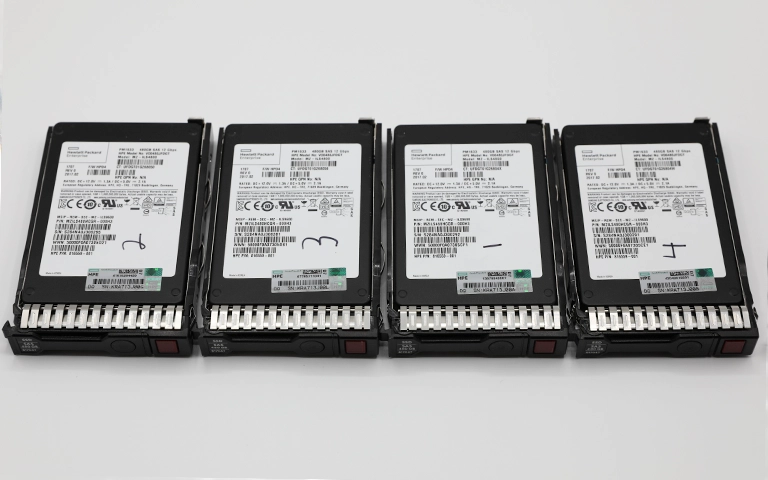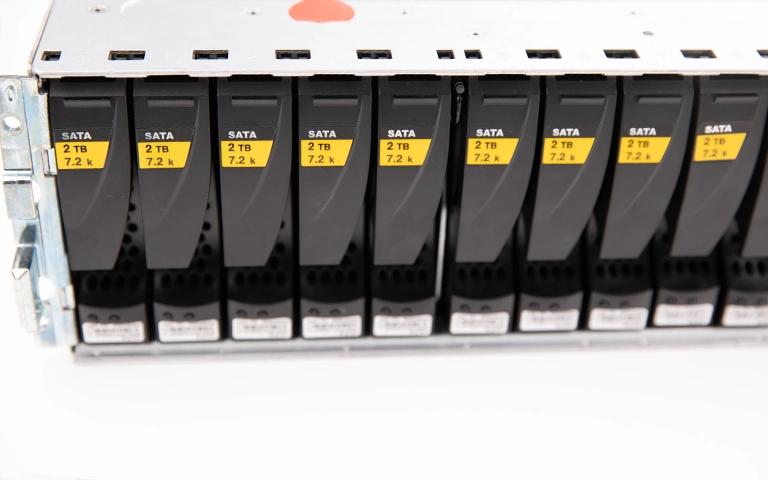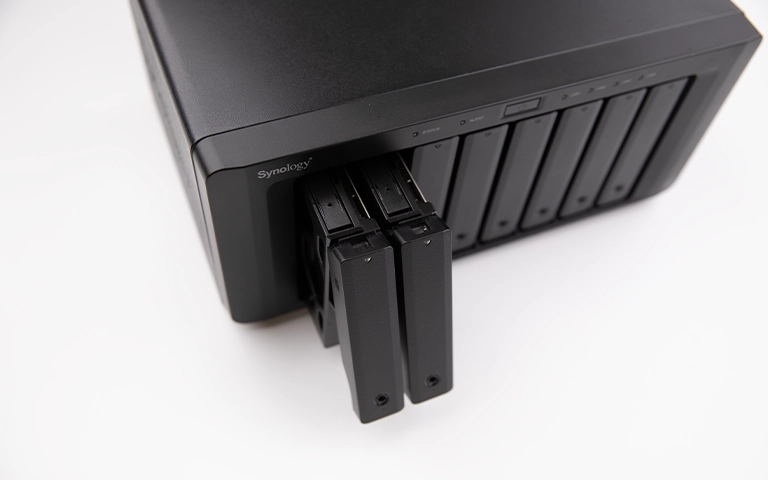Choosing the right RAID configuration is one of the most important decisions when setting up a server. RAID, or Redundant Array of Independent Disks, determines how your data is stored, accessed, and protected across multiple drives.
Servers often handle large amounts of critical data, so performance and reliability are key. The right RAID configuration can improve read and write speeds, ensure data availability during hardware failure, and make system management easier.
However, with several RAID levels available, each offering a unique balance of speed, redundancy, and capacity, the decision can be complex.
In this guide, you will learn how RAID works in server environments, explore the most common RAID levels, and discover how to select the best setup based on your storage goals. You will also understand what happens when RAID fails and how RAID Recovery Services can help recover your data safely and efficiently.

Understanding RAID in Server Environments
RAID technology is designed to combine multiple physical drives into a single logical unit. This approach increases performance, enhances redundancy, or achieves both depending on the chosen configuration. In server environments, RAID plays a vital role in ensuring continuous data access and protection against hardware failures.
Unlike standalone storage, servers operate continuously and support multiple users or applications at once. A properly configured RAID system allows data to be written and read efficiently across several disks, reducing bottlenecks and preventing data loss if one of the drives fails.
Each RAID level has a specific structure that affects performance and data protection differently. For instance, some levels focus on mirroring data for safety, while others use striping and parity for higher speed and better space efficiency. Understanding these differences is crucial before deciding which setup to use.
For a deeper look at how RAID structures differ, you can explore our article on types of RAID.
Common RAID Levels for Servers
Different RAID levels offer varying levels of performance, protection, and storage efficiency. Understanding how each configuration works helps you choose the best one for your server’s specific needs.
RAID 0 stripes data across multiple drives to maximize read and write speed. It is useful for temporary or performance-heavy tasks but offers no redundancy. A single drive failure leads to total data loss.
RAID 1 duplicates the same data on two or more drives. This configuration provides strong protection against drive failure but reduces usable storage capacity by half. It is ideal for systems that prioritize data integrity.
RAID 5 combines striping with distributed parity, offering a good balance of performance, fault tolerance, and capacity. It can continue operating even if one drive fails, making it a common choice for business servers. Learn more about its reliability in our RAID 5 vs RAID 6 comparison.
RAID 6 adds an extra layer of safety by storing two sets of parity data. It can tolerate two drive failures at the same time, making it suitable for enterprise-level servers handling critical data.
RAID 10 merges mirroring and striping, giving both fast performance and strong data protection. It is widely used in database and virtualization servers where uptime is crucial.
To learn more about specific server RAID configurations, check our post on RAID configurations for server.

RAID Level Comparison for Server Performance
Selecting the right RAID level depends on how you balance speed, capacity, and data protection. The table below compares the most common RAID configurations used in servers to help you identify which fits your operational requirements best.
If you want to understand how RAID controllers affect these results, see our article on software RAID vs hardware RAID.
Key Factors When Choosing RAID for a Server
Selecting the best RAID configuration requires understanding how your server operates and what it needs to deliver. Below are the most important factors to consider before finalizing your RAID setup.
Type of Workload: Consider whether your server handles databases, virtual machines, web hosting, or backups. High-performance tasks like virtualization benefit from RAID 10, while general file storage may work efficiently on RAID 5 or RAID 6.
Number of Drives Available: The RAID level you choose depends on the number of disks in your array. RAID 1 requires at least two drives, RAID 5 needs three, and RAID 6 requires four or more.
Data Importance and Uptime: If continuous operation is essential, prioritize redundancy. RAID 6 or RAID 10 ensures your data remains available even when multiple drives fail.
Performance Requirements: Applications that demand fast read and write speeds perform best with RAID 10 or RAID 0. However, RAID 0 should only be used for non-critical data because it lacks protection.
Budget and Scalability: Higher RAID levels offer better safety but require more drives and greater investment. Consider your current budget and how easily you can expand storage as your data grows.
To avoid issues when expanding or rebuilding your array, learn more about RAID rebuild data loss risks.

RAID Failures in Servers and Recovery Options
Even the most reliable RAID configurations can fail due to hardware damage, power interruptions, or incorrect rebuild attempts. When a server RAID fails, the consequences can be severe, leading to system downtime, corrupted volumes, or complete data inaccessibility.
One of the most common causes of failure is a drive malfunction followed by an unsuccessful rebuild.
In some cases, RAID controllers fail or store incorrect configuration data, which can further damage the array. Attempting to repair the issue without expert help often increases the risk of permanent data loss.
If your server RAID has failed, it is important not to reinitialize or rebuild the array on your own. Instead, shut down the system and seek help from professionals.
At RAID Recovery Services, we specialize in restoring data from failed server arrays, including RAID 5, RAID 6, and RAID 10 configurations. Our engineers use advanced recovery techniques in controlled environments to ensure your data is handled safely.
For more insight into causes and recovery processes, visit our detailed guides on RAID controller failure recovery and troubleshoot RAID failure.
Fast turnaround times for business-critical data
Conclusion: Choosing the Ideal RAID for Your Server
The best RAID configuration for your server depends on how you balance speed, capacity, and redundancy. For high-performance workloads that require reliability, RAID 10 is often the best choice. RAID 5 and RAID 6 are preferred by many businesses because they combine efficiency with strong data protection, while RAID 1 suits smaller systems that prioritize safety over space.
No matter which configuration you choose, it is important to plan carefully. Consider your storage goals, the critical nature of your data, and future scalability before setting up your RAID array. Regular monitoring and proper maintenance will also help prevent avoidable failures.
If your server RAID has already failed or you are experiencing unusual performance issues, RAID Recovery Services can help. Our engineers provide expert recovery solutions for all server RAID types and ensure your data is restored safely and efficiently.

Trust the experts with proven results
Frequently Asked Questions
What is the best RAID level for a server?
The best RAID level depends on your priorities. RAID 10 is ideal for high-performance environments that require both speed and redundancy. RAID 5 and RAID 6 are often used in business servers because they provide a balance between capacity, performance, and fault tolerance.
Can I use RAID 0 for a server?
RAID 0 offers excellent performance but no data protection. It should only be used for temporary data or non-critical applications. For most server environments, RAID levels that include redundancy, such as RAID 5 or RAID 10, are safer options.
What causes RAID failure in servers?
Common causes include drive failure, power surges, overheating, RAID controller malfunction, or incorrect rebuild attempts. When any of these occur, the array can become inaccessible or lose critical data.
How can I recover data from a failed server RAID?
It is best to turn off the system immediately and avoid running rebuilds. Contact RAID Recovery Services for a professional evaluation. Our specialists can recover data from failed or corrupted arrays without risking further damage.
How can I prevent RAID failure in a server?
Use high-quality drives, monitor disk health regularly, and replace failing components promptly. Maintain backups of critical data and ensure your server operates in a stable power and temperature environment.